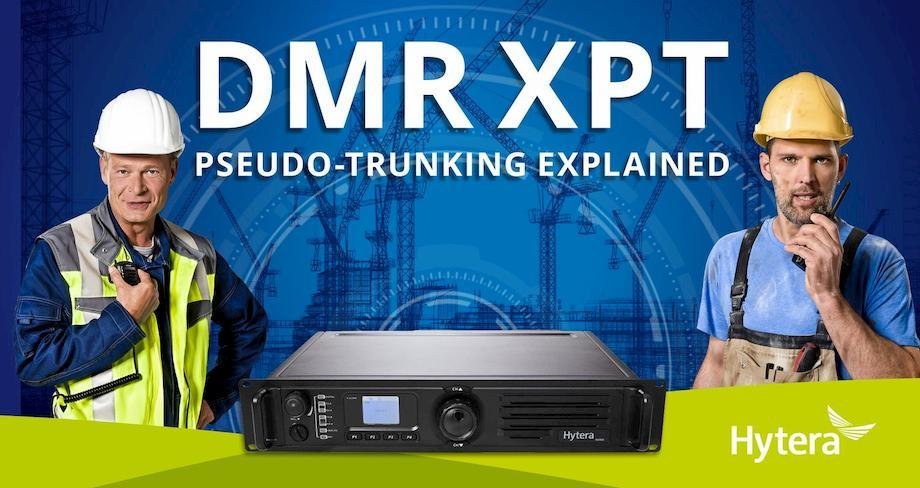DMR XPT ‘Pseudo-Trunking’ explained
Customers who have invested in a DMR Tier 2 conventional radio system often find they need more capacity on their network as their business or organisation grows.

Hytera's Extended Pseudo Trunking (XPT) system provides a means of expanding a network without having to move up to a full DMR Tier 3 trunked radio system. The XPT solution, developed exclusively by Hytera, offers a way to replicate a distributed trunked network, but without the need to invest in a centralised system controller.
Conventional two-way radio systems allocate dedicated channels to individual talk groups. Trunked radio systems have a pool of channels available. A centralised controller dynamically allocates a traffic channel over a dedicated control channel to a user or group of users as and when required. However, licenses for dedicated control channels can be difficult to obtain from regulators.
The great advantage of the XPT solution is that it gets around the need for a dedicated control channel by using a new distributed digital trunking protocol developed by Hytera. XPT enables more users onto the network using their existing spectrum resource, thereby offering a simpler, more efficient and affordable alternative to fully trunked systems.
In a Hytera XPT system, the repeaters broadcast the system’s status information in each frequency via a beacon signal, which informs the radios of available channel resources. The radio can then switch to an available channel slot to communicate.
This allows different users across various departments or talk groups to quickly access a communications channel slot without being confined to a dedicated channel slot, as with DMR Tier 2 conventional operations.
The XPT Digital Trunking system allows customers to simulate a trunked radio system within available resources. Upgraded master repeaters manage the available frequencies across multiple slots to maximise the available resources.
A single XPT system can support up to eight repeaters at one site and provide up to 16 traffic channels, supporting up to 1,200 users. Each traffic channel can be customised to transmit voice or data.
Deploying the XPT solution also means manual channel selection by the radio user is no longer required. Instead, free channels are automatically determined for call requests and assigned dynamically, as with trunked radio systems. XPT is available in single or multi-site configurations.
Migration to XPT
Existing Hytera DMR Tier 2 users will find it very easy to migrate to XPT. Customers will need RD985s repeaters, one IP switch and XPT compatible Hytera DMR radios. They will also need to upgrade their license to use XPT with RD985s repeaters - no additional license is needed for the radio terminals.
As Hytera Professionals and some Commercial DMR Products were designed to be software upgradeable from Conventional Tier 2 to Extended Pseudo Trunking, the next step is to upgrade the firmware on existing RD985s repeaters and DMR radios. The repeater, or repeaters are then connected with each other via an IP network connected to an IP switch and antenna(s).
The XPT license is imported into the repeaters and the DMR radios configured for XPT operation. Since XPT has no centralised controller, there is no need for additional hardware, simply IP link the repeaters and you’re ready.
Should the customer’s user base or traffic volume increase, additional repeaters can easily be connected to the IP network to further boost capacity.
Hytera’s XPT combines the advantages of DMR Tier II with the properties of trunked radio systems. The solution provides customers with a simple and cost effective, easily installed, maintained and operated solution which will boost the capacity of their mobile radio network.
For more information on Hytera’s XPT solution and other DMR radio products you can head to the XPT solution page or contact one of our authorised partners to discuss your requirements.
16 January 2018

